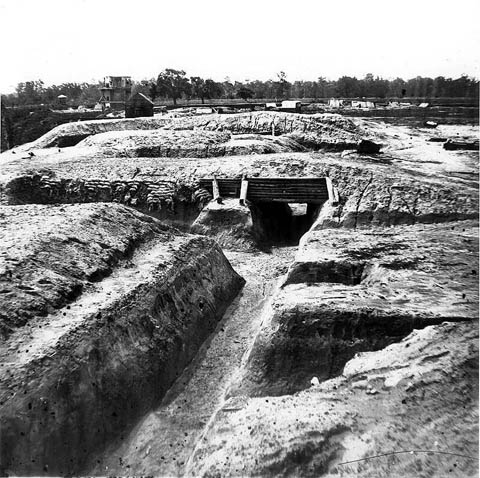It seems like this is a year for military anniversaries. July, of course, will see the centenary of the beginning of World War I, and June 6 will be 70 years on from the invasion of Normandy in WWII. Getting somewhat lost among the big landmark anniversaries is the fact that we’re now into the 50th anniversary of some key events in the Vietnam War. At least we have historians like Peter Edwards to remind us of those.
But there’s been another significant anniversary going on for three years now. And although it was an event that profoundly shaped the modern world and essentially determined the nature of the latter-day anglosphere, it has passed almost totally unnoticed here in Australia. The American Civil War took place 150 years ago. Today, for example, is the sesquicentenary of the battle of Ware Bottom Church—a relatively minor battle that nonetheless left almost 1,500 casualties. The last two weeks saw the 150th anniversary of the battles of the Wilderness and Spotsylvania Courthouse—two actions between armies totalling 160,000 personnel, each resulting in over 25,000 casualties.
Those sorts of casualty figures aren’t unusual in Civil War battles. The war marked the transition between the formation manoeuvre of the Napoleonic war and the industrial scale trench warfare of WWI. Elements of either or both appear in various battles. Early actions saw large formations clash directly in open territory, in a manner that would’ve been immediately recognisable to European militaries of half a century before. But the advent of modern weaponry that was more accurate and lethal at a greater distance—especially the rifled barrel superseding the smoothbore musket—rendered those tactics unworkable.
Not that there was an overnight revolution; tactics evolved gradually and it wasn’t a ringing endorsement of the ability of military leaders to adapt quickly to changing circumstances. But some later developments would presage WWI’s western front. Today’s anniversary battle at Ware Bottom, for example, was part of a campaign that saw the Confederate side construct the extensively dug-in and fortified defensive Howlett line (see photo above).
Historians continue to argue about these (and other) aspects of the Civil War. And in fairness, some take issue with the admittedly simplified description above. Griffith’s Battle Tactics of the Civil War, for example, argues that tactics never really accounted for weapons developments. That might be so, but a look at aggregate figures suggests that at least some adaptation took place. As I’ve shown before, Civil War daily casualty rates and combatant densities (troops per square kilometre)—a measure that reduces as armies disperse in response to more lethal weapon systems—both fell between Napoleonic and WWI levels.
A slow response to technological developments wasn’t the only criticism levelled at Civil War generals. The commander of Union forces in the first year of the war was Major General George McClellan. The consensus view is that McClellan was an excellent planner and organiser but a poor battlefield performer, being too cautious and unable to quickly take the initiative when opportunities presented themselves. In this view he becomes a poster boy for the phenomenon of peacetime generals not necessarily being right for wartime. (Again, historians continue to argue, and there’s a contrary view that he became a scapegoat for early Union setbacks.)
Whatever his battlefield abilities, McClellan wasn’t a role model for military acceptance of civilian control. His insubordination, including to the President, was legendary and well documented. The lack of respect was also reciprocated; Lincoln commented that ‘if he can’t fight himself, he excels in making others ready to fight’. There wasn’t room for both of them, and Lincoln summarily removed McClellan from command after one too many disappointments. The President took a distinctly hands-on approach to his generals, appointing and removing them when he deemed it appropriate, and he let his views be openly known to them—often in no uncertain terms. And, for the first time, the telegraph enabled the civilian leader to reach into the battlefield. (The story is told in Elliot Cohen’s Supreme Command, a book that should be on the reading list of all generals and political leaders.)
I’ve only selected a few elements of the Civil War to discuss here, and wouldn’t claim more than an amateur appreciation. For the Strategist reader interested in learning more about this tragic but fascinating history, the New York Times ‘Disunion’ series includes a blog commentary and reprints of contemporary reports along a five year timeline beginning in 1860. ASPI Chairman and American history buff Stephen Loosley recommends The Battle Cry of Freedom, volume IV of the Oxford history of America, as the best single volume history. If a DVD is more your pace, you can’t go past Ken Burns’ magnificent series The Civil War—which, incidentally, celebrates its 25th anniversary next year.
Andrew Davies is senior analyst for defence capability and director of research at ASPI. Image courtesy of Library of Congress.


